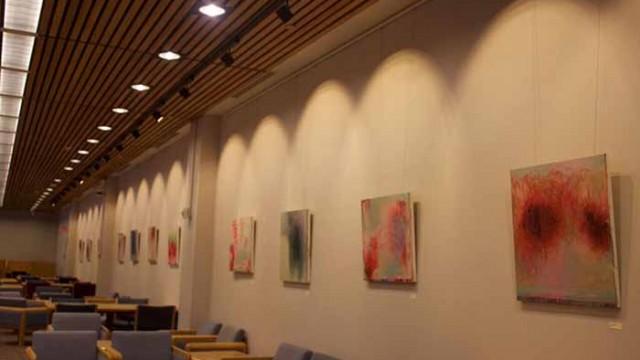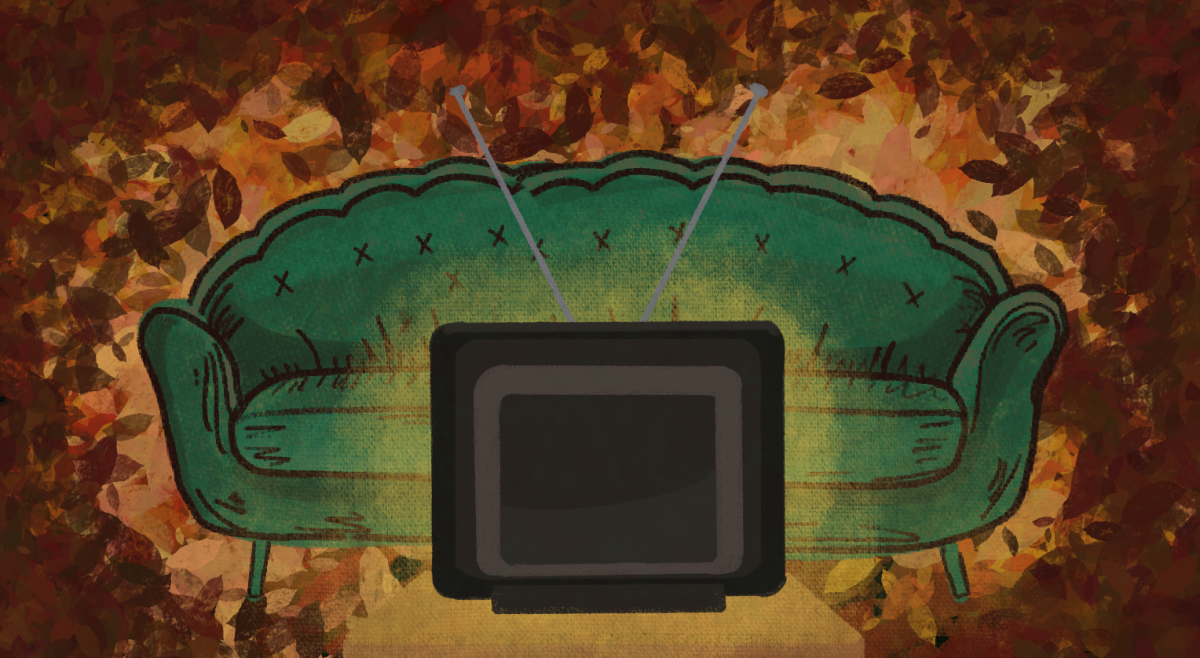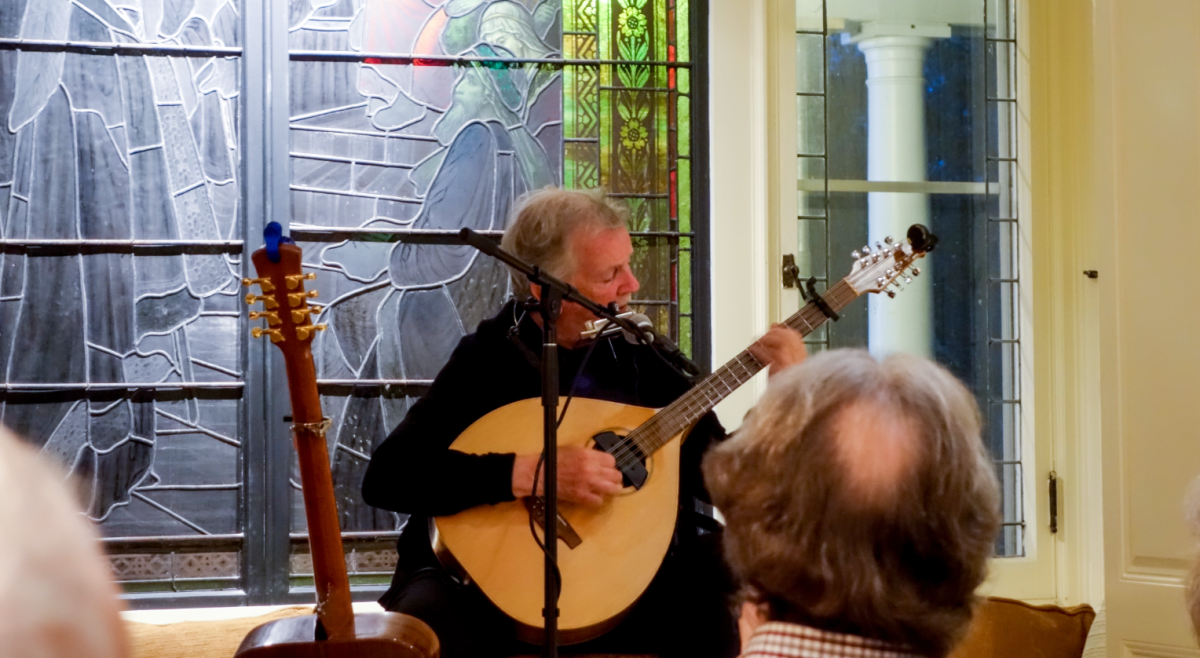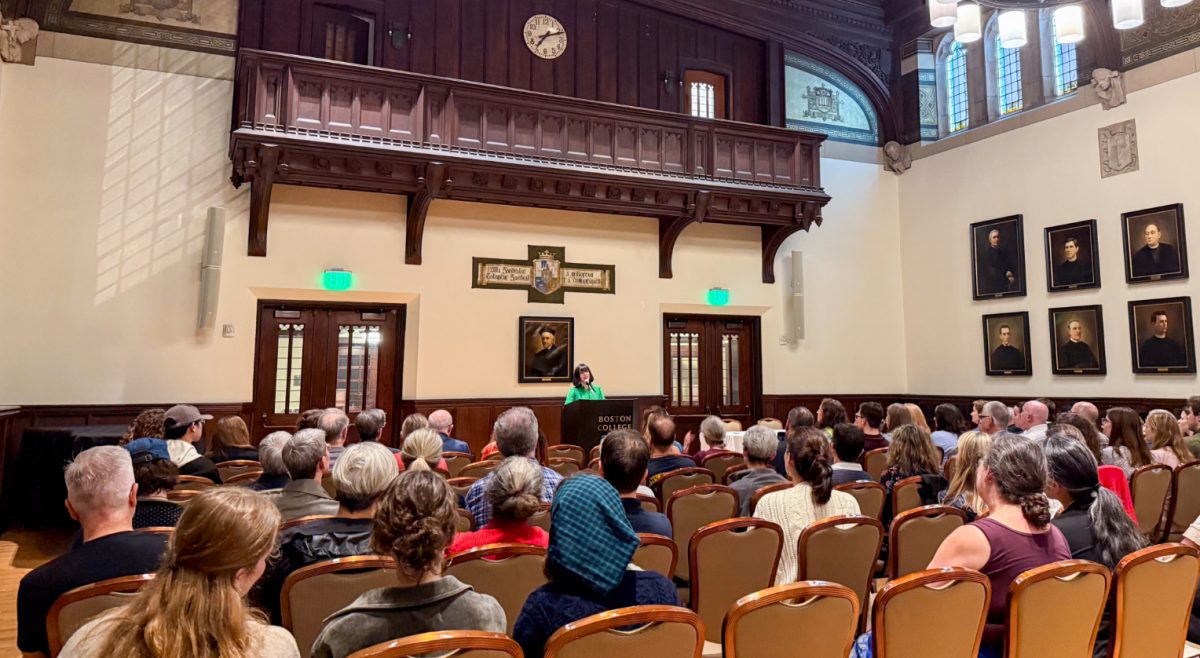Capturing the audacity, terror, and ridiculousness of the U.S. war in Iraq, the 24 Hour News: Paintings exhibit by Professor Mary Armstrong is an evocative collection of paintings sure to leave their mark on all that pass by it. Mary Armstrong received her BFA from Boston University in 1977 and has since divided her time between Georgetown, ME and Newton, MA. Armstrong has been a professor in the Fine Arts Department at Boston College since 1989. Her work is often displayed at Victoria Munroe Gallery in New York and Boston, The Orsman Gallery at Smith College in Northampton, The Portland Museum of Art, and The Maine Center for Contemporary Art.
Her paintings often combine themes of space, light, time, and the earth. Aesthetically, they contain vibrant, gorgeous colors. Relying on shading and formless figures and shapes, her paintings expertly evoke a sense of vast openness. While certainly not landscapes, the beauty of the earth and humanity’s connection to it is clearly presented in her works.
This particular exhibit, however, takes a slight turn from her usual themes. Instead, it was influenced by the media’s coverage of the war in Iraq. This exhibit was shown in 2006 at the Victoria Munroe Fine Art in Boston. “Armstrong’s works blend goofiness, grief and sheer painterly beauty— an unusual and stirring combination,” Cate McQuaid of the Boston Globe said in her 2006 review. While goofiness is perhaps too optimistic, the exhibit is certainly captivating.
These paintings are a meditation on war, needless suffering, and violence. The photographs from the Abu Ghraib Prison, combined with quotes which highlighted the generally apathetic attitude of political leaders of the time, had a particular influence on these paintings. The images contain an attempt to express a meditation on the violent, devastating consequences of the war that resulted from the arrogance of the decision to go to war in the first place.
Collectively, the use of color in the images is brilliant. The various shades of red and blue and the shifting contrast of the pigments is captivating. There is a clear connection to the gory events that influenced the images, but the mix of the cooler colors works to evoke a sense of escape. Many of the paintings contain images of isolated organs, which works as a stark reminder of the terrible atrocities that came out of the war.
The exhibit is located on the third floor of O’Neill Library, behind the newspaper stacks, and will be on display until May. They offer the opportunity to sit and reflect on the past and the world of war that we live in. But 24 Hour News is also a meditation on the importance of our actions and the ways they influence the future. Next time you are in O’Neill, take a moment from the rush and stress of being back on campus to visit the exhibit and see how Armstrong’s paintings capture the essence of a society at war.
Featured Image By Sarah Hodgens













